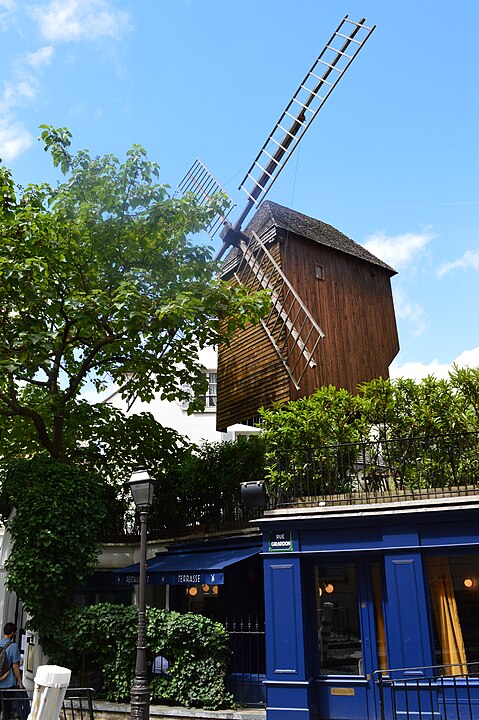From Flour to Fame: The Story of Montmartre’s Iconic Windmill
Ever wondered how a humble windmill became one of Paris’s most legendary landmarks? The Moulin de la Galette, perched on Montmartre’s legendary hill, has seen centuries of history, art, and celebration.

Built in 1622, this windmill wasn’t always a symbol of Parisian charm. Originally called Blute-fin (named after the French term for sifting flour), it began as a workhorse for grinding flour and pressing crops.
By 1809, the Debray family took over, turning it into a commercial mill alongside their second mill, the Radet, built in 1717.

By the early 19th century, the Debray family was baking galettes, rustic brown bread, from their freshly milled flour. These galettes became so popular that the mill adopted the name Moulin de la Galette.

But bread wasn’t the only thing rising. In the 1830s, the family swapped milk for Montmartre’s local wine and transformed the windmill into a guinguette - a lively spot for drinks, food, and dancing.
By 1833, they added a dance hall inspired by Terpsichore, the muse of dance, cementing the windmill’s place as a bustling social hub.
An Artistic Muse
Artists flocked to the Moulin de la Galette, capturing its magic in their work. Renoir’s iconic 1876 painting, Bal du moulin de la Galette, immortalized its lively dance scenes.

Van Gogh, Toulouse Lautrec, Pissarro, and others also painted the mill, while Émile Zola waxed poetic about Montmartre’s charm and simple joys.
Scars of war
During the Napoleonic Wars in 1814, Russian forces attacked the windmill, killing three Debray family members, including one who was nailed to the mill’s wings!
Years later, in 1870, Montmartre faced devastation again during the Franco-Prussian War, when Pierre-Charles Debray died defending the area. A mass grave for victims of the siege lies near the mill - a somber reminder of the sacrifices made.
From Workhorse to Cultural Icon
As Montmartre urbanized in the late 19th century, the windmills evolved. One became a viewing tower, while the dance hall thrived as a community gathering spot.
In 1915, the Friends of Old Montmartre saved the Moulin de la Galette from demolition, and in 1924, it was relocated to its current corner at Girardon and Lepic Streets.

Though no longer operational, it was named a historical monument in 1958 and lovingly restored in 1978.
A Taste of History
Today, the Moulin de la Galette lives on as a private property, but its spirit remains alive at the bistro Le Moulin de la Galette, located at the foot of the Radet windmill.
The restaurant offers a warm, nostalgic vibe reminiscent of Montmartre’s golden days. You’ll find two picturesque terraces: one surrounded with greenery along Rue Lepic, and the other a quiet garden corner.
The menu reflects the seasons, marked by market-fresh ingredients and authentic French recipes, accompanied with nearly 100 wines to choose from.
Final Words
The Moulin de la Galette, more than a pretty relic, is a symbol of resilience and celebration throughout the ages.
Whether you're exploring Montmartre’s winding streets, or savoring a glass of wine at the bistro, the sight of the windmill will continue to astonish you.
83 Rue Lepic 75018 Paris - 01 46 06 84 77 - website
